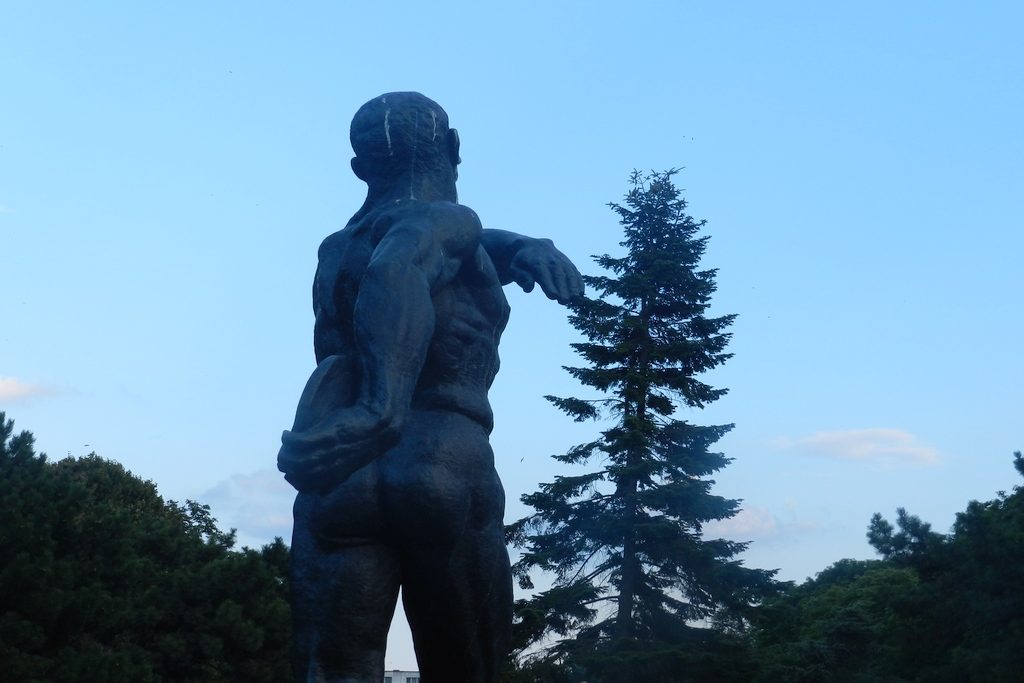

The statue was built during 1958 by Boris Caragea and worked in bronze.
Boris Caragea (b. 11/24 January 1906, Balchik, Bulgaria – d. 8 August, 1982, Bucharest) was a Romanian sculptor, correspondent member of the Romanian Academy in 1955.
In his youth, he was boatman in Balchik. After World War I, between 1924-1925, he took drawing lessons with Hrandt Avakian. A year later, supported by the sculptress Zoe Băicoianu, he joined the School of Fine Arts from Bucharest, where he was taught by Frederic Storck and Oscar Han.
He perfected his studies with Dimitrie Paciurea, working two years in the master’s workshop after which, in 1932, had won Paciurea scholarship.
At one point, due to the lack of funds, Boris Caragea wanted to leave school.
Oscar Han helped him to take his exams from two years in one, and thus Caragea managed to finish his studies.
Dobrudja is described in his works: “Dance from Dobrudja”, “Fishermen” or “Woman with yoke” and his connection with the royal family, which he had through Zoe, strenghtens when the native Balchik becomes the soul house of the Queen Mary. During the new regime, the sculptor Boris Caragea is seized by existential panic and makes a gesture annulling himself as an artist of an era truly golden of Romania: destroys his works produced during the years before communism.
Wanting desperately to survive the radical change in society, at least at the level at which he had been accustomed, Caragea starts working with worthy fervor of communist yards. Sculpts and glorifies working people, Soviet soldiers, fighters of the people.
His works become effigy of the Soviet system, on the facade of the Romanian Opera from Bucharest, in parks (Statue of Lenin from Bucharest and the Victory Monument from Constanţa), on the cliff from Constanţa (disc thrower) in the center of large cities – Monument of the Soviet soldier from Iaşi, etc. His ardor brings him the appreciation of the communist leaders, who promote him in the academic career, at first as a professor within the Institute of Fine Arts “Nicolae Grigorescu” from Bucharest (1949-1974), then as president of the Union of Fine Artists (1951-1957). During 1955 he became correspondent member of the Romanian Academy, and during 1962 he was elected President of the Council of Fine Arts within the State Committee for Culture and Art. Covered by the regime privileges, Boris Caragea dies in Bucharest at the age of 76 years, on 8 August 1982. He knew the glory during totally different ages, but his bas-reliefs from the communist buildings are lost, covered by the lack of respect for the past. Ignorance that was planted in the people’s behavior precisely the regime that was glorified by the sculptor born in the Balchik of Romanian bohemia.
